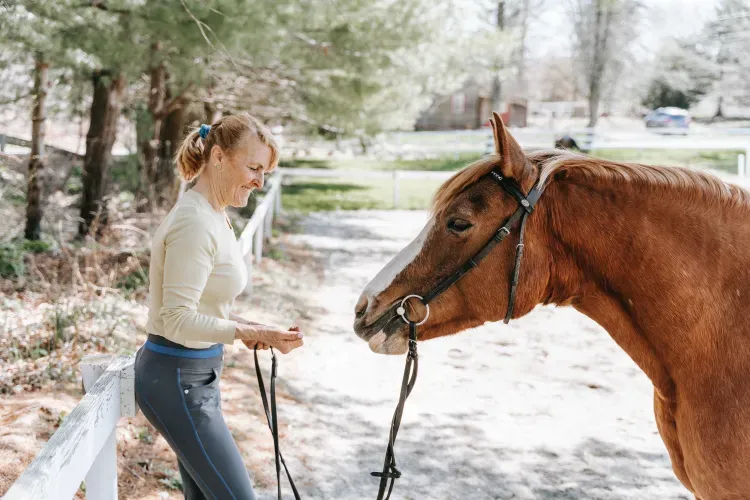
When purchasing a horse remember that both conformation and frame size will affect the horse’s strength. Good weight-carrying conformation positively affects horse strength. Poor weight-carrying conformation negatively affects horse strength. So two fit horses could have the same height and weight but this does not mean they will be equally strong.
The two standard methods of assessing horse strength are:
- Measuring the front cannon bone circumference
- 20% of the horses fit body weight.
For more about these standard methods skip to the link below.
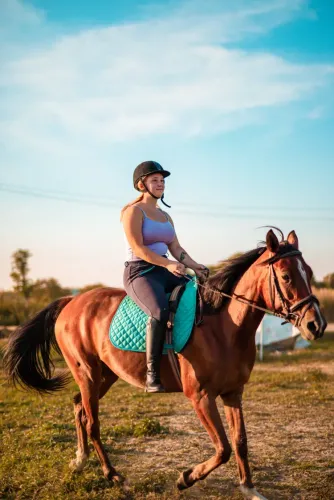
Article Suggestion
Picking the Right Horse for the Rider’s WeightHowever, the first method underestimates the strength of thick-set horses. The second method works best with small light-framed horses and overestimates the strength of tall thick-set horses. Hence conformation and frame size must be used to calculate horse strength.
Looking at Horse Conformation and Frame Size.
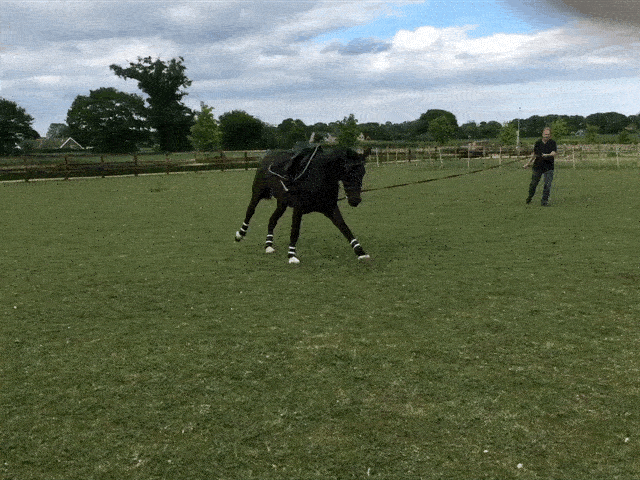
Good weight-carrying conformation
This young horse has a good size frame and weight-carrying conformation.
To identify these attributes first look at the weakest parts of horse anatomy. The limbs and loins are the weakest parts of the horse, so good limb and loin conformation will help the horse to carry a heavy rider. The horse’s back, between the withers and the loins, also has a bearing on strength.
There are 9 horse strength considerations:
- Forearm length and width
- Gaskin length and width
- The flatness and circumference of cannon bones
- Cannon bone angulation in relation to the ground
- Frame size in relation to the cannon bones
- Hocks, knees, and fetlock sizes
- Pastern length, circumference, and slope
- Loin length and width
- The backs shape and depth
An experienced person will be able to assess these considerations at a glance. Remember, it is unlikely that a horse has the perfect weight-carrying conformation and small deviations are not a problem.
Use this diagram to locate the horse parts mentioned in this article and hone your assessment skills.
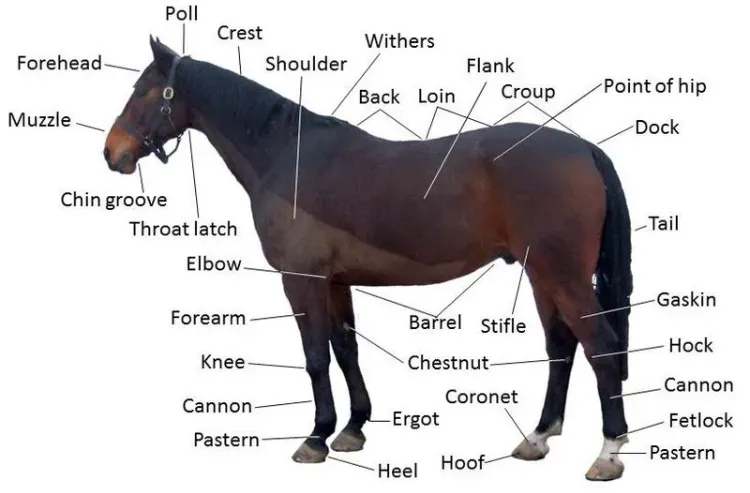
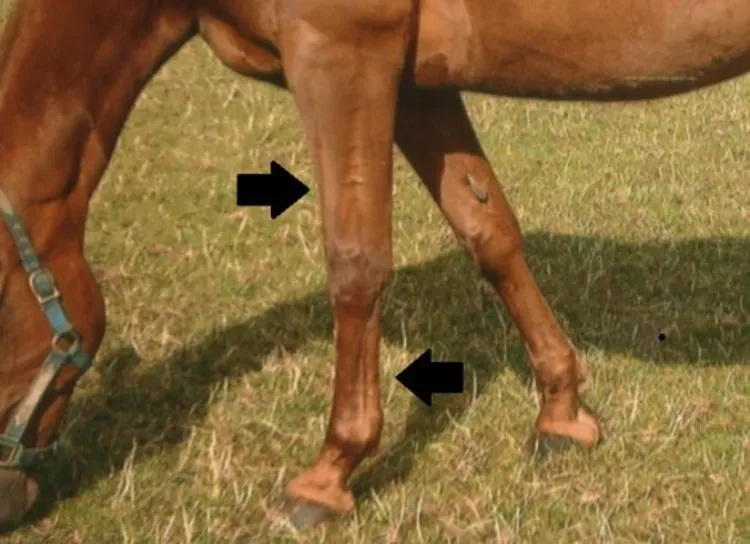
1. Length and Width of the Forearm
Long forearms and shorter cannon bones give a mechanical advantage when lifting the foot for any motion. Horses with this conformation have increased strength and stamina. Wide and long forearms with short cannon bones make for even greater strength.
- Look for a horse with forearms noticeably longer than the front cannon bones
- For even greater strength look for broad muscular forearms
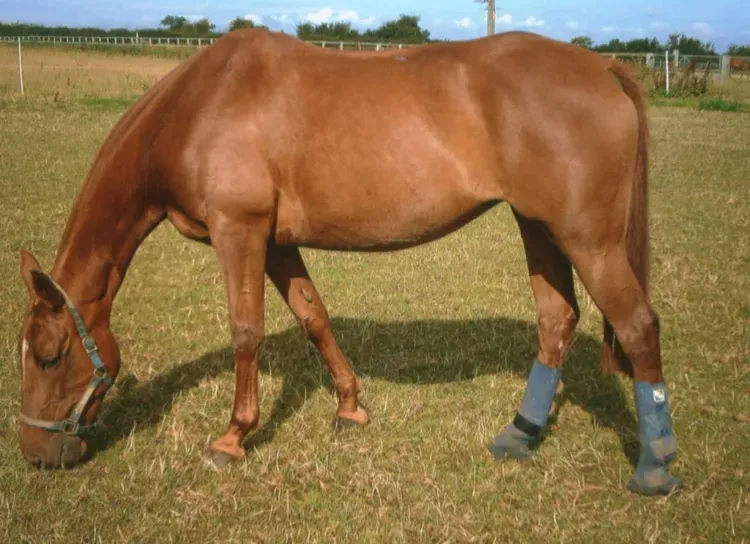
2. Gaskin Length and Width
In the hind leg, a long gaskin with shorter cannon bones provides the same advantage. This is called “well let down hocks” A wide gaskin with shorter cannon bone is associated with even greater strength.
- Look for a horse with well-let-down hocks
- For even greater strength seek wide gaskins
3. The flatness of Cannon Bones and the Cannon Bone Circumference
Cannon bones must appear flat when viewed from the side and not round. This means the tendons running down the back of the cannon bone are set a greater distance from the actual cannon bones. This gives a mechanical advantage over round cannon bones. In addition, bigger circumferences of the lower leg make for stronger horses.
The hind end provides impulsion so the back leg cannon bones must be larger than the front leg cannon bones:
- Look for flat cannon bones with a good circumference
- Make sure the rear cannon bones have a greater circumference than the front cannon bones by at least half an inch
4. The Angle of the Cannon Bones in Relation to the Ground
When a horse stands square, his cannon bone should be vertical to the ground from the front and side. This permits greater strength.
- Look for vertical cannon bones in the front and back legs
5. Frame Size in relation to the Cannon Bones
For strength, the circumference of the cannon bone just below the knee must be enough for the horse’s frame. Assess this when the horse is in a lean condition. Many tall and big-built horses do not have enough bone below the knee. This is called being overtopped and this always reduces strength.
- 7.5 to 8 inches of bone is enough for a small lightweight horse
- The average horse needs between 8.5 and 9 inches of bone
- Large horses require at least 9.5 inches of bone
6. The Size of Hocks, knees, and Fetlocks
Large joints permit wide muscle attachment, which is a mechanical advantage.
- Knees must appear large and flat when viewed from the front
- Fetlocks must appear large but not puffy
- Hocks must appear large and flat when viewed from the side
7. Pastern Length, Circumference, and Slope
Long over-sloping pasterns make a comfortable ride and absorb footfall concussion but they are weak. Upright pasterns are strong but cause too much foot concussion. Narrow pasterns are a weakness.
- Look for a medium pastern length with a good circumference
- The angle should be about 45 degrees to the ground
- The circumference should be no more than 1 inch less than the circumference at the middle of the cannon bone
8. Length and Width of the Loins
Strong loins are very important. The distance between the last full rib and the SI joint must be short. For strength, the loins must also be wide at their narrowest point.
- For additional strength look for short and wide loins
- Loin width is not calculated when a horse is overweight
9. The Back Shape and Depth
Deep-bodied horses with straight backs are stronger.
- Horses with shallow bodies and not enough depth through their loins are weaker
- Avoid sway-backed horses
The most important metrics
A horse’s weight-carrying capacity is affected by all of the above considerations. The most important are:
- The amount of bone below the knee and whether this is flat
- The loin dimensions
- Muscling and length of forearms and gaskins
- Body frame size.
Real World Examples:
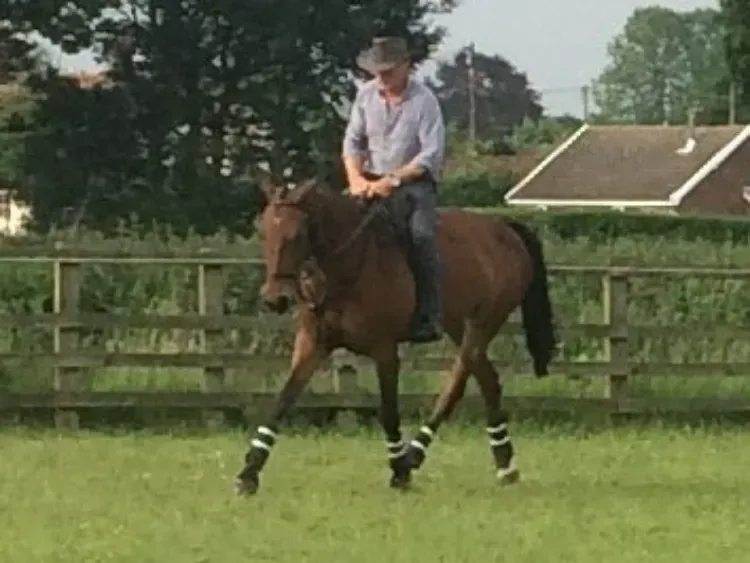
1. Sabrina
- Height 15.1hh
- Weight 1000 pounds
- Cannon Bone 8 inches
- Loin Width 16 inches
- Loin Length 15 inches
Sabrina has an average-sized frame for a small horse. She has good loin width and strong legs but is rather long in the back. She can carry a 170-pound Rider.
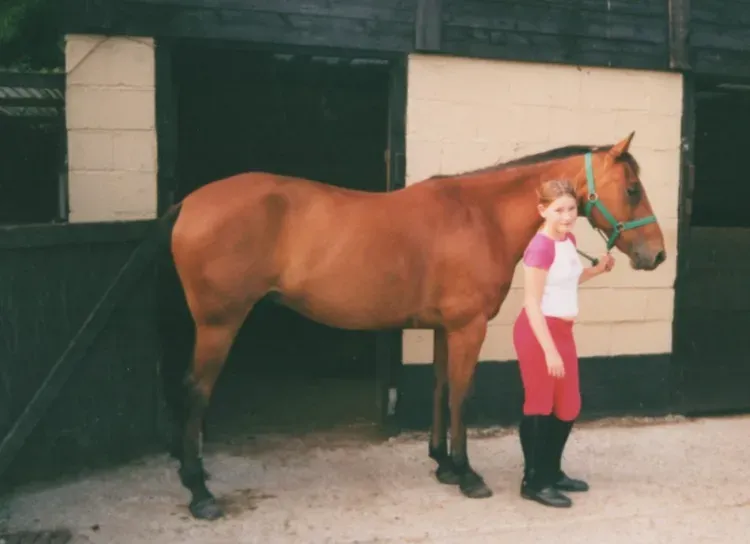
2. Primo
- Height 14.3hh
- Weight 930 pounds
- Cannon Bone 7.5 inches
- Loin Width 14 inches
- Loin Length 14 inches
Primo is a very small horse with a small frame. Her back leg is not that strong and her loins are not wide. She can carry a 155-pound rider.

3. Rosie
- Height 15.1hh
- Weight 1200 pounds
- Cannon Bone 8.5 inches
- Loin Width 16 inches
- Loin Length 13 inches
Rosie has a large frame for a small horse but she does not have particularly wide loins. She is very deep through the body. She can carry a 190-pound rider.
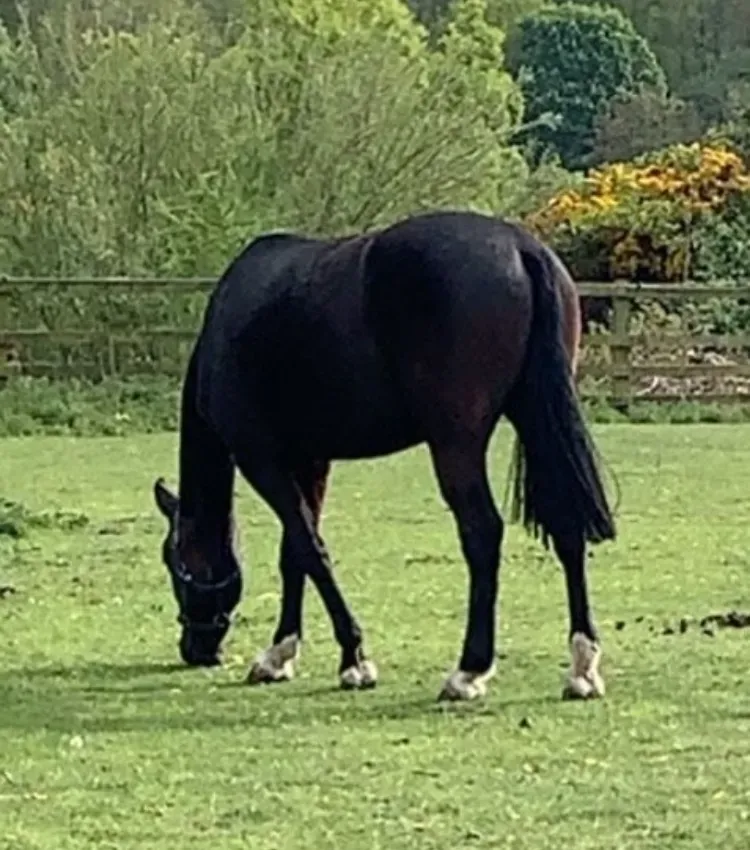
4. Fergie
- Height 15.1 hh
- Weight 1200 pounds
- Cannon Bone 9 inches
- Loin Width 18 inches
- Loin length 12 inches
Fergie is very strong for a small horse with a large frame. She can carry a 205-pound rider.

Article Suggestion
Arabian Horses Carry Heavy Riders
